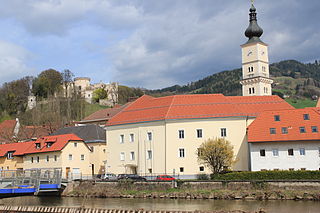
Wolfsberg is a town in Carinthia, Austria, the capital of Wolfsberg District.
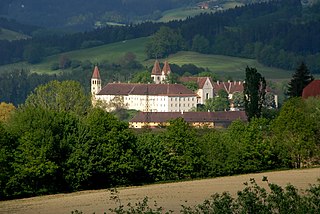
Sankt Paul im Lavanttal is a municipality of the Wolfsberg district in the Austrian state of Carinthia.

Hermagor-Pressegger See is a town in the Austrian state of Carinthia. It is the administrative centre of the Hermagor District. The town is named after Saint Hermagoras of Aquileia, the first bishop of Aquileia.

Albeck is a municipality in the district of Feldkirchen in the Austrian state of Carinthia.
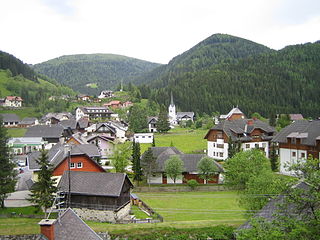
Reichenau is a municipality in the district of Feldkirchen in the Austrian state of Carinthia.

Dellach is a municipality in the district of Hermagor, in the Austrian state of Carinthia.

Kötschach-Mauthen is a market town in the district of Hermagor in Carinthia in Austria.

Glödnitz is a municipality in the district of Sankt Veit an der Glan in the Austrian state of Carinthia.

Greifenburg is a market town in the district of Spittal an der Drau in the Austrian state of Carinthia.

Krems in Kärnten is a municipality in the district of Spittal an der Drau in Carinthia in Austria.

Lurnfeld is a market town in the district of Spittal an der Drau in the Austrian state of Carinthia. The municipality consists of the two Katastralgemeinden: Möllbrücke and Pusarnitz, comprising several small villages.

Oberdrauburg is a market town in the district of Spittal an der Drau at the western rim of the Austrian state of Carinthia.

Weissensee is a municipality in the district of Spittal an der Drau in Carinthia, Austria.

Griffen is a market town in the district of Völkermarkt in the Austrian state of Carinthia.

Bad Sankt Leonhard im Lavanttal is a spa town in the district of Wolfsberg in the Austrian state of Carinthia.
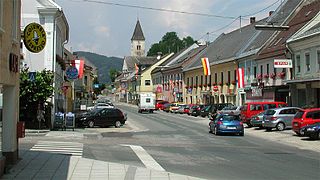
Lavamünd is a market town in the district of Wolfsberg in the Austrian state of Carinthia.

Reichenfels is a town in the district of Wolfsberg in the Austrian state of Carinthia.
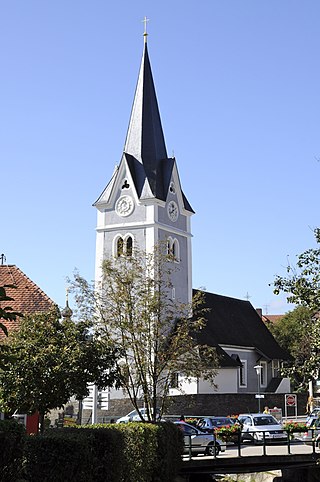
Sankt Georgen im Lavanttal is a town in the district of Wolfsberg in the Austrian state of Carinthia.

Obertilliach is a municipality in the district of Lienz, in the Austrian state of Tyrol.
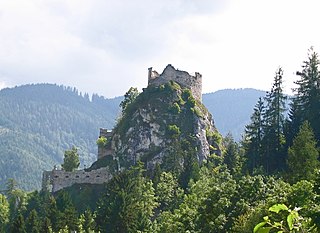
Eppenstein is a former municipality in the district of Murtal in the Austrian state of Styria. Since the 2015 Styria municipal structural reform, it is part of the municipality Weißkirchen in Steiermark.























